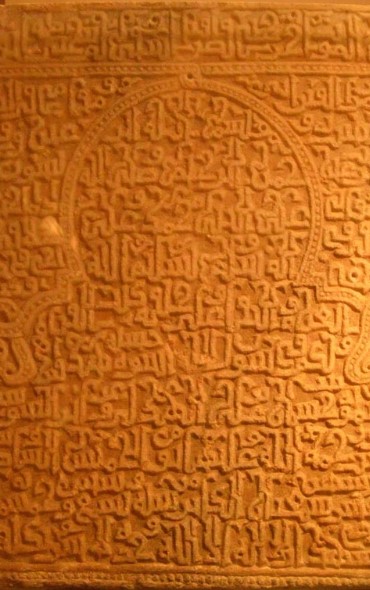Research indicates that the Maltese have a lot more in common with their Sicilian neighbours than we first thought.
Malta’s chequered past of multiple invasions and change of hands might have us believe that today’s Maltese people are the offspring of an eclectic history. However, there is one significant moment in the island’s past that can be considered to be day zero, from which today’s population has grown. And it only dates back 20 generations.
Meanwhile, despite the fact that Malta has over 300 churches and the Maltese consider themselves more Catholic than the Pope, a 1,000 years ago, the island was decidedly Muslim. Not only that, but there was a clean break in the Christian tradition from the time St Paul was shipwrecked on the island in 66AD and introduced Christianity and 1250, when Christianity was once more the dominant religion after the second Norman invasion. And although the earliest records of inhabitants on Malta date back 7,000 years, we are not the direct descendants of the so-called 'Temple People'.
The Arab conquest of Malta in 870 AD was a turning point in the island’s history, marking the end of three centuries of Byzantine rule and the beginning of a new “modern” period, which would lead to the development of the Arabo-Maltese language originating from Siculo-Arab spoken in Sicily around the 11th century, which has now mutated into today’s Malti. The attack decimated the Byzantine city of Melite (today's Mdina) and it is reported that stones and marble columns from its churches were shipped to Tunisia to build the castle at Sousse.
"The devastating attack by the Muslims of Tunisia on Malta led to the complete depopulation of the island."
What is extraordinary is that the two eras were separated by a period of around 150 years, during which time the Maltese Islands were uninhabited. The devastating attack by the Muslims of Tunisia on Malta led to the complete depopulation of the island. Visitors did stop by occasionally, but only to hunt wild donkeys which they sold abroad as draught animals, and to slaughter sheep for food or catch fish. They also collected and exported honey.
Extensive historical research as well as scientific studies into the genetic origin of contemporary Maltese people indicates that the island was eventually repopulated by Arabic-speaking Muslims. This means that there was a break in the continuity of a Maltese race and of an indigenous Christian tradition on the islands.
But why did it take so long for Malta to be resettled?

Continental Europe at English Wikipedia, CC BY-SA4.0
Eminent Maltese historian Godfrey Wettinger had a theory about this. He believed that Malta had to wait until neighbouring Syracuse, which had also suffered the same fate at the hands of the Arabs, was rebuilt. Syracuse was, evidently, considered far more important than Malta.
He suggeststhat “the earliest significant permanent settlers in Malta could most probably have come from the nearest parts of Sicily, that is, that it was part of the revival and re-population of South-Eastern Sicily all the way from Syracuse round the coast to Gela.” These were Muslims who had advanced from Western and Central Sicily having crossed over from Northern and Central Tunisia only two or three generations earlier.
Prof Wettinger continued that further documentary evidence showed that other Arab-speaking people arrived directly in Malta from Tunisia, during the first half of the 11th century.
Scientific research seems to corroborate this. Genetics expert Prof. Alex Felice points out that “populations have a genetic structure. It is not easy to define although it reflects origins to a certain extent”. Together with colleagues from other institutions across the Mediterranean and University College London, he conducted research which showed that “the contemporary males of Malta most likely originated from Southern Italy, including Sicily and up to Calabria. There is a miniscule amount of input from the Eastern Mediterranean with genetic affinity to Christian Lebanon. Females may have moved, or been moved, along a different route.”
The research focused on 'founder effects' which are a genetic phenomenon seen when a small population expands rapidly over a short period of time, with some genetic traits either becoming more common or bred out of the population altogether. Prior to 1500, the Maltese population was regularly decimated by slave traders. The arrival of the Knights and subsequently British rule allowed the Maltese population to grow from about 20,000 to over 450,000 in less than 500 years.
"Historical research and scientific studies into the genetic origin of contemporary Maltese people indicates that the island was eventually repopulated by Arabic-speaking Muslims."
These genetic traits, or ‘founder effects’, are inherited from one person with a particular DNA mutation and show up in the descendants who form part of the wider population. This can be seen, for example, in a particular form of haemoglobin disorder, known as Thalassaemia, where the Maltese have their own unique variety
Orthodontist Dr Simon Camilleri used this research to support his theory that the very high prevalence of unerupted canine teeth and missing incisor teeth in the Maltese population is also due to this phenomenon.
“Genetics plays a major part in the aetiology of ectopic maxillary canines. While there is no specific genetic proof about the teeth, given the founder effects highlighted by Prof Felice, who showed that we are related primarily to Western Sicilians, and that two dozen Sicilian surnames make up a very large proportion of the Maltese population, this is the most likely explanation,” points out Dr Camilleri.
Well, that's us convinced! What's your theory?